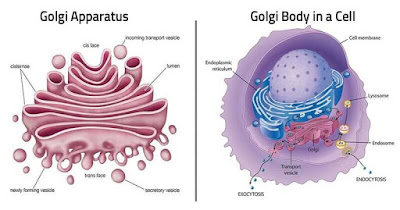CELL THE UNIT OF LIFE :-
THEORETICAL PARTS
SCROLL DOWN TO GET THE PDF OF THIS CHAPTER
1. WHAT IS A CELL ?
- Cell is the fundamental structural and functional unit of all living organisms.
- Robert Hook discovered the cell
- Anton Von Leeuwenhoek first saw and described about the living cell
CELL THE UNIT OF LIFE,CELL,WHAT is cell,Chapter 8 class 11 Biology notes,Chapter 8 notes,CLass 11 chapter 8 notes,CBSE,BIOLOGY,CLASS 11,KOTA NOTES,Chapter 8 class 11 Biology notes for NEET,
1.1 CELL THEORY
- Schleiden and Schwann together formulated the cell theory
- Rudolf Virchow (1855) first explained that cells divided and new cells are formed from pre-existing cells (Omnis cellula-e cellula).
- All living organisms are composed of cells and products of cells.
- All cells arise from pre-existing cells.
- Cell theory as understood today is:
- all living organisms are composed of cells and products of cells.
- all cells arise from pre-existing cells.
2. AN OVERVIEW OF CELL
- Cells that have membrane bound nuclei are called eukaryotic whereas cells that lack a membrane bound nucleus are prokaryotic.
- In both prokaryotic and eukaryotic cells, a semi-fluid matrix called cytoplasm occupies the volume of the cell.
- The cytoplasm is the main arena of cellular activities in both the plant and animal cells. Various chemical reactions occur in it to keep the cell in the ‘living state’.
- Besides the nucleus, the eukaryotic cells have other membrane bound distinct structures called organelles.
3. PROKARYOTIC CELLS
- The prokaryotic cells are represented by bacteria, blue-green algae, mycoplasma and PPLO (Pleuro Pneumonia Like Organisms)
- There is no well-defined nucleus.
- The genetic material is basically naked, not enveloped by a nuclear membrane.
- Specialised differentiated form of cell membrane called mesosome is the characteristic of prokaryotes.
- Mycoplasmas, the smallest cells, are only 0.3 μm in length while bacteria could be 3 to 5 μm. The largest isolated single cell is the egg of an ostrich.
- Among multicellular organisms, human red blood cells are about 7.0 μm in diameter.
- Nerve cells are some of the longest cells.
CELL THE UNIT OF LIFE
- The prokaryotic cell envelope consists of a tightly bound three layered structure i.e., the outermost glycocalyx followed by the cell wall and then the plasma membrane.
- Bacteria can be classified into two groups on the basis of the differences in the cell envelopes and the manner in which they respond to the staining procedure developed by Gram viz., those that take up the gram stain are Gram positive and the others that do not are called Gram negative bacteria.
- Glycocalyx differs in composition and thickness among different bacteria. It could be a loose sheath called the slime layer in some, while in others it may be thick and tough, called the capsule.
- Bacterial flagellum is composed of three parts – filament, hook and basal body. The filament is the longest portion and extends from the cell surface to the outside.
- The pili are elongated tubular structures made of a special protein. The fimbriae are small bristle like fibres sprouting out of the cell.
- The pili are elongated tubular structures made of a special protein. The fimbriae are small bristle like fibres sprouting out of the cell.
- In prokaryotes ribosomes are associated with the plasma membrane of the cell
- They are about 15 nm by 20 nm in size and are made of two subunits - 50S and 30S units which when present together form 70S prokaryotic ribosomes.
- Ribosomes are the site of protein synthesis. Several ribosomes may attach to a single mRNA and form a chain called polyribosomes or polysome.
- Reserve material in prokaryotic cells are stored in the cytoplasm in the form of inclusion bodies.
- Gas vacuoles are found in blue green and purple and green photosynthetic bacteria.
3. EUKARYOTIC CELLS
- The eukaryotes include all the protists, plants, animals and fungi.
- Eukaryotic cells possess an organised nucleus with a nuclear envelope.
- Their genetic material is organised into chromosome
3.1 Cell Membrane
- Structure of cell membrane was proposed by Singer and Nicolson (1972) widely accepted as fluid mosaic model-of lipid enables lateral movement of proteins within the overall bilayer.
- One of the most important functions of the plasma membrane is the transport of the molecules across it.
- The membrane is selectively permeable to some molecules present on either side of it.
3.2 Cell Wall
- A non-living rigid structure called the cell wall forms an outer covering for the plasma membrane of fungi and plants
- The cell wall of a young plant cell, the primary wall is capable of growth, which gradually diminishes as the cell matures and the secondary wall is formed on the inner (towards membrane) side of the cell.
- The middle lamella is a layer mainly of calcium pectate which holds or glues the different neighbouring cells together.
- The cell wall and middle lamellae may be traversed by plasmodesmata which connect the cytoplasm of neighbouring cells.
3.3 Endomembrane System
- The endomembrane system include endoplasmic reticulum (ER), golgi complex, lysosomes and vacuoles.
3.4 The Endoplasmic Reticulum (ER)
- Network or reticulum of tiny tubular structures scattered in the cytoplasm that is called the endoplasmic reticulum (ER).
- The endoplasmic reticulun bearing ribosomes on their surface is called rough endoplasmic reticulum (RER). In the absence of ribosomes they appear smooth and are called smooth endoplasmic reticulum (SER).
CELL THE UNIT OF LIFE
- RER- protein synthesis
- SER- lipid synthesis.
3.5 Golgi apparatus
CELL THE UNIT OF LIFE,CELL,WHAT is cell,Chapter 8 class 11 Biology notes,Chapter 8 notes,CLass 11 chapter 8 notes,CBSE,BIOLOGY,CLASS 11,KOTA NOTES,Chapter 8 class 11 Biology notes for NEET,
- They consist of many flat, disc-shaped sacs or cisternae.
- The golgi apparatus principally performs the function of packaging materials, to be delivered either to the intra-cellular targets or secreted outside the cell.
3.6 Lysosomes
- These are membrane bound vesicular structures formed by the process of packaging in the golgi apparatus
- They have hydrolytic enzymes which are capable of digesting carbohydrates, proteins, lipids and nucleic acids.
3.7 Vacuoles
- The vacuole is bound by a single membrane called tonoplast.
- Plant cells the vacuoles can occupy up to 90 per cent of the volume of the cell.
- In plants, the tonoplast facilitates the transport of a number of ions and other materials against concentration gradients into the vacuole.
CELL THE UNIT OF LIFE
3.8 Mitochondria
- Mitochondrion is a double membrane-bound structure with the outer membrane and the inner membrane.
- Mitochondria are the sites of aerobic respiration.
- They produce cellular energy in the form of ATP, hence they are called ‘power houses’ of the cell.
3.9 Plastids
- Plastids are found in all plant cells and in euglenoides
- Plastids can be classified into chloroplasts, chromoplasts and leucoplasts.
- Chloroplast-photosynthesis.
- In the chromoplasts fat soluble carotenoid pigments like carotene, xanthophylls and others are present.
- The leucoplasts are the colourless plastids of varied shapes and sizes with stored nutrients.
- Chloroplasts of the green plants are found in the mesophyll cells of the leaves.
- The chloroplasts are also double membrane bound.
- The space limited by the inner membrane of the chloroplast is called the stroma.
- A number of organised flattened membranous sacs called the thylakoids, are present in the stroma.
3.10 Ribosomes
- The eukaryotic ribosomes are 80S while the prokaryotic ribosomes are 70S.
- Here ‘S’ stands for the sedimentation coefficient.
3.11 Cytoskeleton
- An elaborate network of filamentous proteinaceous structures present in the cytoplasm is collectively referred to as the cytoskeleton.
- Involved in many functions such as mechanical support, motility, maintenance of the shape of the cell.
3.12 Cilia and Flagella
- Cilia (sing.: cilium) and flagella (sing.: flagellum) are hair-like outgrowths of the cell membrane.
- Cilia are small structures which work like oars, causing the movement of either the cell or the surrounding fluid.
- Flagella are comparatively longer and responsible for cell movement.
- Their core called the axoneme, possesses a number of microtubules running parallel to the long axis
- Arrangement of axonemal microtubules is referred to as the 9+2 array.
3.13 Centrosome and Centrioles
- Centrosome is an organelle usually containing two cylindrical structures called centrioles
- Both the centrioles in a centrosome lie perpendicular to each other in which each has an organisation like the cartwheel.
- Centriole which helps in cell division.
3.14 Nucleus
- Nucleus as a cell organelle was first described by Robert Brown as early as 1831
- The nucleus has highly extended and elaborate nucleoprotein fibres called chromatin, nuclear matrix and one or more spherical bodies called nucleoli.
- Nucleoli is a site for active ribosomal RNA synthesis.
- During different stages of cell division, cells show structured chromosomes in place of the nucleus.
- Every chromosome essentially has a primary constriction or the centromere on the sides of which disc shaped structures called kinetochores are present.
- The Metacentric chromosome has middle centromere forming two equal arms of the chromosome.
CELL THE UNIT OF LIFE
- The Sub-metacentric chromosome has centromere nearer to one end of the chromosome resulting into one shorter arm and one longer arm.
- In Acrocentric chromosome the centromere is situated close to its end forming one extremely short and one very long arm.
- The Telocentric chromosome has a terminal centromere.






